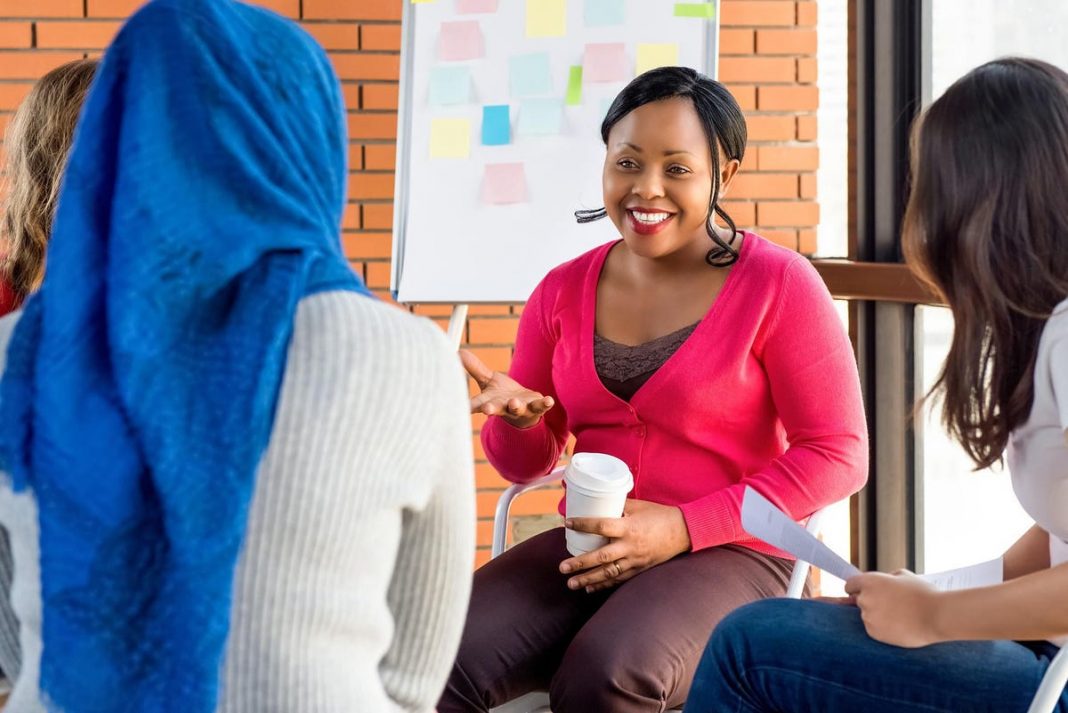Intentional Inclusivity in a Five-Minute Read
getty
By: Amber Booth-McCoy
In a post-Breonna Taylor, George Floyd, civil unrest, and global pandemic social climate, words like “inclusion,” “equity,” and “justice” are frequently being tossed around like hot potatoes.
For many, “diversity” is quickly becoming the buzzword of the moment in personal and professional spaces. Organizations and institutions from the private business sector to small liberal arts colleges are homing in on climate and assessing their culture of belonging.
Very often in society we acknowledge individuality and diversity, but we celebrate conformity and convention. We reinforce the ideals with ubiquitous sayings such as “a square peg in a round hole,” “sticking out like a sore thumb,” and others.
Problem is, blending in isn’t as easy for everyone. If we are being honest, the national events and prominent news stories of 2020 and 2021 illuminated cultural inequities that proved “sticking out” can be frustrating, frightening, and for some, fatal.
As an inclusion strategist, I am often asked:
How can I be more inclusive?
In essence, intentional inclusivity is moving from asking “Who’s at the table?” to asking “Who’s not at the table that needs to be?” and “Did they get the invitation with detailed directions to the table and upon arrival a chair and a microphone?”
In practice, it presents as being culturally humble. Cultural humility is allowing each person to be the owner of their own experience. Acknowledging they are the ONLY expert on their experience. While there is no “magic bullet” for inclusivity, here are five tips you can implement today.
Work toward cultural humility instead of cultural competence.
Cultural humility acknowledges that each individual is an expert on their experience. It reminds us to pause and accept that we don’t know everything about every person, population, or culture. It allows for lifelong learning and willingness to self-assess. Most importantly, it seeks to fix power imbalances in spaces they shouldn’t exist.
[Related: Inclusive Leadership: Training is Only Part of the Solution]
Commit to experiencing people and not populations.
It is natural to group or pair like things. Our brains do this unconsciously to assist us with processing the massive amounts of data every second. This same function may cause us to miss an amazing multi-dimensional individual because we placed them in a box based on one dimension of their being.
Error-correct, in the moment.
We are never going to get it all right, all the time. We can own our faux pas, apologize when necessary, and listen to the other person’s experience. Seek to affirm, appreciate, and value the lived experience of the next person.
[Related: Diversity is an Outcome]
When advocating or seeking to be an ally, recognize your privilege.
True allyship seeks to fortify/amplify voices or work already in existence. An ally is essentially a cultural diplomat, there to provide access to resources, information, and/or spaces that may have previously been unwelcoming. Once you make room at the table, pass the metaphorical microphone to the new attendee.
Silence is collusion.
If you hear something racist, sexist, discriminatory, or bigoted and you say nothing, you are complicit in said statement or behavior. In the words of Elie Wiesel:
We must take sides. Neutrality helps the oppressor, never the victim. Silence encourages the tormentor, never the tormented. Sometimes we must interfere.
Diversity, equity, and inclusion is a job for everyone. It’s not just the responsibility of leadership, specialists, activists, and progressive clergy. It is the job of every neighbor, every coworker, every citizen, every parent, every friend, every member of society. Until society works at its maximum capabilities for the most vulnerable of us, then it truly doesn’t.
[Related: Three Things You Must Do To Get Diversity Right]
—
Amber Booth-McCoy is the CEO of The Diversity Booth, Inc. TDB is an innovative and intentional diversity, equity, inclusion consulting firm experienced in co-creating equitable and inclusive cultures.




